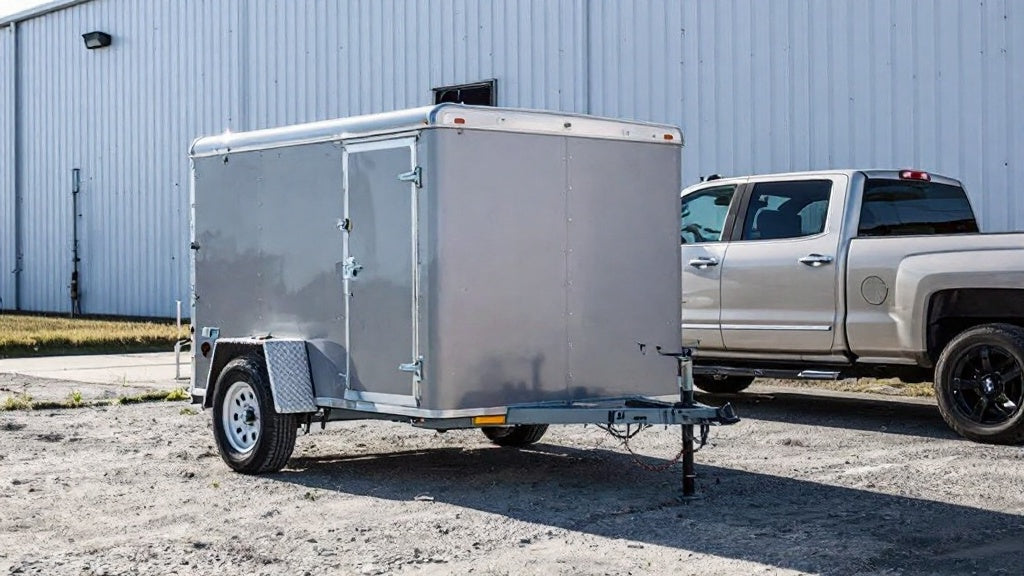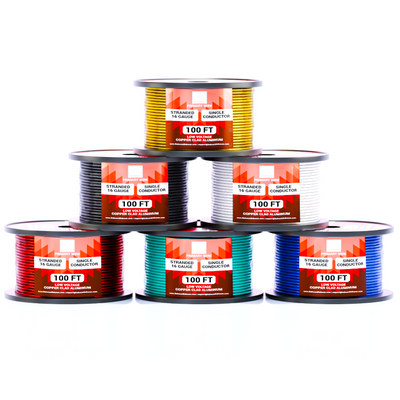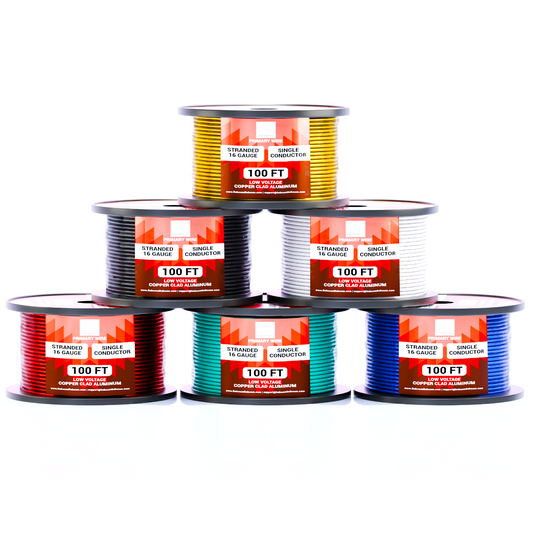
The Ultimate Trailer Wiring FAQ: Answering Your Top Questions
Share
Introduction
Trailer wiring can be confusing, whether you're setting up a new trailer or troubleshooting electrical issues. With different connector types, wire gauges, and potential problems, many trailer owners have questions about how to properly wire their trailers for safety and functionality.
In this comprehensive FAQ, we’ll answer the most common trailer wiring questions, providing expert guidance to help you understand, install, and maintain your trailer's electrical system.
What Are the Different Types of Trailer Wiring Connectors?
There are several types of trailer wiring connectors, each designed for specific trailer functions:
- 4-Pin Connector: Basic wiring for running lights, brake lights, and turn signals.
- 5-Pin Connector: Adds a wire for reverse lights or an auxiliary function.
- 6-Pin Connector: Supports additional power needs, including trailer brakes.
- 7-Pin Connector: Standard for larger trailers, including those with electric brakes and charging circuits.
Choosing the right connector depends on your trailer’s requirements and your towing vehicle’s wiring setup. Checkout our blog about 4-way vs 7-way Trailer Wiring for further understanding.

What is the Standard Trailer Wiring Color Code?
Trailer wiring follows a color-coded standard to simplify installation and troubleshooting:
| Wire Color | Function |
|---|---|
| White | Ground |
| Brown | Tail Lights |
| Yellow | Left Turn/Brake |
| Green | Right Turn/Brake |
| Blue | Electric Brakes |
| Red/Black | Auxiliary Power |
It’s crucial to verify the color coding on your specific trailer, as variations may exist. You can visit our blog about Trailer Wiring Color Code to ensure that you are using the right color code.
What Wire Gauge Should I Use for Trailer Wiring?
The correct wire gauge depends on the electrical load and length of the wiring. Here’s a general guideline:
| Wire Gauge | Recommended Use |
|---|---|
| 10 GA | Main power, battery charging, electric brakes |
| 12 GA | Running lights, brake lights, auxiliary power |
| 14 GA | Turn signals, tail lights |
| 16 GA/18 GA/20 GA/22 GA | Small marker lights or low-power accessories |

How Do I Test Trailer Wiring?
If your trailer lights aren’t working correctly, follow these steps to diagnose the issue:
- Use a multimeter to test voltage at each connector pin.
- Check the ground wire—a poor ground connection is a common problem.
- Inspect for damaged or corroded wires and repair as needed.
- Plug the trailer into another vehicle to determine if the issue is with the trailer or the towing vehicle.
- Test each light individually to confirm functionality.
How Do I Fix a Broken Trailer Wire?
To repair a damaged trailer wire, follow these steps:
- Identify the damaged section by visually inspecting and using a multimeter.
- Cut out the damaged wire using wire cutters.
- Strip the ends of the remaining wire and the new replacement wire.
- Use crimp connectors or solder the wires together for a strong connection.
- Insulate the repair using heat shrink tubing or electrical tape.
- Test the connection before securing the wires with zip ties or cable clamps.

How Can I Prevent Trailer Wiring Issues?
To avoid common trailer wiring problems, follow these maintenance tips:
- Use dielectric grease on connectors to prevent corrosion.
- Secure wires properly with zip ties and clamps to prevent wear.
- Check for exposed or frayed wires regularly and repair them immediately.
- Ensure a solid ground connection for all electrical components.
- Keep trailer plugs clean and dry when not in use.
Why Aren’t My Trailer Lights Working?
If your trailer lights are malfunctioning, consider these common causes:
- Blown fuses in the towing vehicle.
- Corroded or loose connectors preventing a proper connection.
- A bad ground connection affecting all lights.
- Damaged or cut wires causing intermittent failures.
- Incorrect wiring configuration resulting in non-functional lights.
Diagnosing the problem systematically will help identify and fix the issue efficiently.

Do I Need a Battery to Power My Trailer Lights?
Standard trailer lights get power from the towing vehicle, but some setups, like campers or trailers with electric winches, may require a dedicated battery. If using a battery:
- You can use a 10 GA CCA wire for main power connections.
- Install an inline fuse to prevent electrical overloads.
- Consider a battery isolator to prevent draining your vehicle’s battery.
How Do I Upgrade My Trailer Wiring?
Upgrading your trailer’s wiring can improve safety and reliability. Consider these improvements:
- Upgrade to a 7-pin connector for additional power and functionality.
- Replace old wires with high quality CCA wires for longevity.
- Install a junction box to simplify future repairs and modifications.
- Use LED trailer lights for better visibility and efficiency.
- Add a breakaway battery system for added safety in case of disconnect.

Final Thoughts: Your Trailer Wiring Questions Answered
Trailer wiring doesn’t have to be a mystery! With the right knowledge, tools, and high-quality materials, you can ensure your trailer’s electrical system remains in top condition.
Taking the time to understand how trailer wiring works, performing regular maintenance, and using quality components can save you from unexpected issues on the road. Whether you’re installing a new system or troubleshooting an old one, following the best practices outlined here will keep your trailer safe, reliable, and road-ready for years to come.
Do you have additional trailer wiring questions? Drop them in the comments below, and let’s troubleshoot together!








